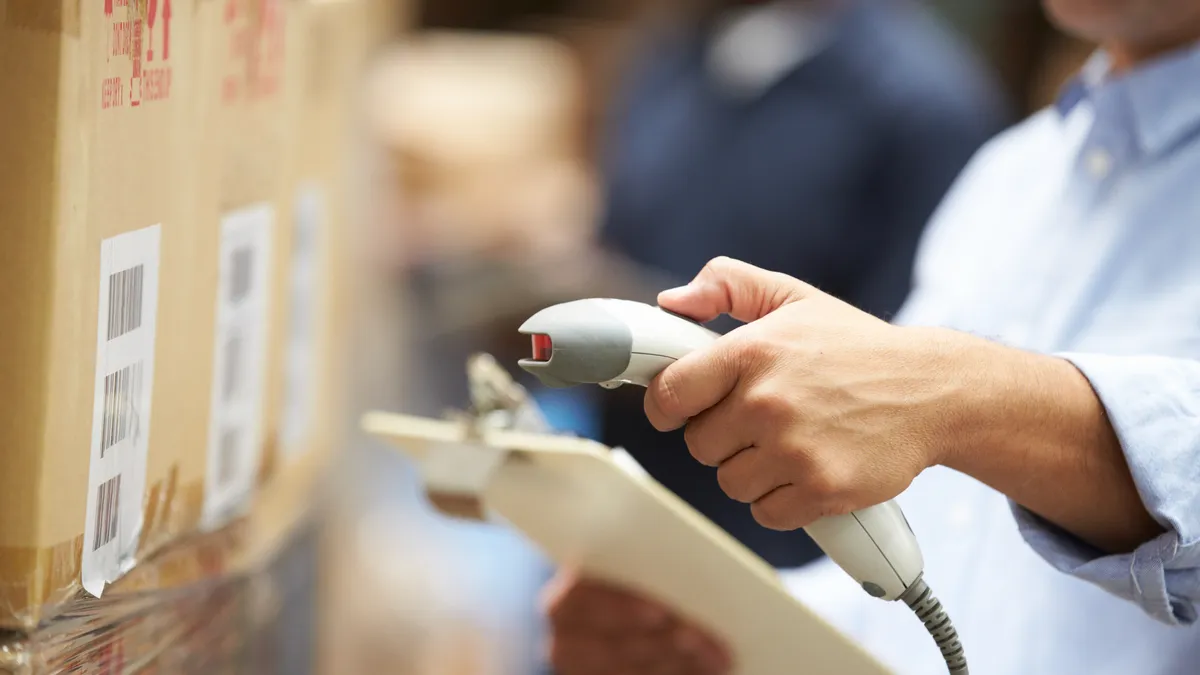Over the years, retailers have become very good at the supply chain—the process of getting goods from the manufacturing plant to the customer. But today, many retailers face a different challenge: taking those goods back, a process referred to as the "reverse supply chain."
Every year, 2 million tons (or 4 billion pounds) of retail returns are loaded into landfills, according to Environmental Capital Group, many of which are already brimming to capacity and contributing to environmental problems like groundwater contamination and greenhouse gas emissions.
Many retailers expect the problem and cost of retail returns to grow, thanks to the rise of e-commerce and more retailers offering free shipping and free returns. A recent study from eMarketer forecasted e-commerce sales in the U.S. will grow 15.6% in 2016, with e-commerce’s share of total retail sales poised to surpass 10% by 2018. Large retailers from Macy’s to Target and Wal-Mart have vowed to grow their omnichannel and e-commerce capabilities, offering new options to customers in order to compete with Amazon.
As retailers ramp up their offerings to keep up with changing consumer expectations and shopping habits, experts say the industry must place a greater emphasis on the reverse supply chain. With the changing tide, retailers are finding they must be equipped to process returns from multiple channels in an efficient manner: an investment that makes environmental and business sense, albeit one they have not traditionally focused on.
The forward supply chain's ugly stepsister
The reverse supply chain has historically been regarded as the forward supply chain's ugly stepsister, an unmanageable “nuisance” that siphoned away costs, according to Jonathan Byrnes, senior lecturer at MIT’s Center for Transportation & Logistics. But eventually, retailers couldn’t ignore lost profits.
As the costs stemming from a lax reverse supply chain hurt their margins, larger retailers began focusing in on it about 15-20 years ago. In 2016, it's becoming increasingly urgent.
“Today, retailers have serious margin problems, especially from omnichannel competitors,” Byrnes said. “So, they are looking under every rock,” including the reverse supply chain.
Part of the problem is that the process for returns hasn't changed much over the years. Many returns to stores were and still are treated more or less in the same way, according to Ann Calamai, director of sustainability for logistics technology company Optoro.
Once an item—let’s say a toaster—is returned, it is then kept at the store until the weekly arrival of a truck that transports the toaster and other returns to a central facility. At the warehouse, piles of unwanted merchandise are relegated to a corner to be dealt with—maybe in a week, maybe in a month. Retailers can choose to refurbish the toaster and resell it, recycle it for parts, sell it to a liquidator, or dispose of it right there.
“What we're seeing in that reverse supply chain is a lot of touches: The liquidator sells to other liquidator who sells to wholesaler and wholesaler has a flea market or it's an eBay shop—regular ol’ folks reselling merchandise,” Calamai said.
But if the goods do end up in the landfill, they will most likely stick around for years and years. Rubber boot soles take about 50-80 years to decompose in landfills; leather shoes, 25-40 years; wool clothing, one to five years. With the number of returns likely to grow each year, the number of rubber boot soles and leather shoes festering away in landfills for decades will likely only increase.
“It’s unsustainable to constantly take natural resources and produce a product that’s eventually going to be thrown away. Summarily, it’s unsustainable to run a business not making money and not growing," said Adam Siegel, vice president for sustainability and retail operations at the Retail Industry Leaders Association. "So sustainability, to me, goes hand-in-hand with business environmental opportunities.”
The growing problem of retail returns
As consumers move online to order anything from a new camera to a new dress, retailers are grappling with high return rates.
In 2014, returns accounted for 8.89% of all retail sales, up from 8.60% in 2013, according to the National Retail Federation. (Because the NRF changed its survey methodology in 2015, those figures aren’t comparable to previous years.) In total, U.S. retailers lost more than $280 billion in sales due to merchandise returns in 2014. If merchandise returns were a retailer, it would have been No. 2 for sales in the Stores Top 100 list that year, according to the NRF.
Most retailers expect that number to grow, thanks to the rise of e-commerce and more retailers offering free shipping and free returns, according to a Gartner survey of 300 retailers cited by MarketWatch.
“More and more stuff is coming back and the traditional way that retailers are handling this inventory is pretty wasteful and inefficient,” said Calamai.
This process is costing retailers. While larger retailers have specific teams dedicated to their reverse supply chains, smaller and medium-sized retailers are still scrambling to create efficiencies. According to Byrnes, retailers generally lose 10-20% of their profits to returns, an avoidable loss that can have serious effects in an already-competitive retail environment where even the smallest of margins can make a difference.
But retailers are not only losing money when they process returned goods. They are also losing valuable warehouse space, according to Byrnes—prized square feet that could be used to process the growing influx of e-commerce orders almost every retailer is experiencing.
Retailers also have to work around the unpredictable nature of the reverse supply chain. Unlike the forward supply chain, which is tightly controlled by seasons and trends, the reverse supply chain can be completely erratic for retailers without the right analytics technology.
“The reverse supply chain is not the outbound supply chain run backwards,” said Byrnes. “It’s completely different with completely different economics and it needs a completely different optimization.”
While a retailer can reasonably predict that parkas will be in-demand in the winter, it has little indication that customers will return a certain parka in droves. This problem is exacerbated by the habits of online shoppers, some of whom tend to buy apparel merchandise in a couple of sizes and return those that don’t fit.
“Outbound is a retailer buying in big volume from merchandiser, where you can optimize it because its repetitive, you can forecast it, and all the factors can really be tightened,” Byrnes said. “If you look at the reverse, it’s like a salmon swimming upstream, it uses different facilities, you do not want to co-mingle it on your shelves, and, once more, everyone calls [with returns] and they want to talk to you.”
How retailers can fix it
While the factors playing into the reverse supply chain can be hard to predict, there are tangible steps retailers can take to reduce waste and save money.
Both Siegel and Byrnes said that one of the first things retailers can do is to look upstream, diminishing returns by analyzing the way products are sold to customers. Or, as Byrnes put it, “getting the right product to the right customer.”
This starts with customer service, both in-store and online. Talking to the customer, getting to know their preferences, and then recommending the perfect shirt, shoe, or household appliance to fit their needs helps guarantee that the customer is going to be happy with the product and not return it. Of course, this style of highly personalized service requires a highly skilled and trained employee—and most likely, an increased investment on the part of retailers.
Online, retailers like North Face are launching sophisticated chat capabilities on their websites to bring service representatives to the online shopper. Powered by IBM’s Watson, the chatbot asks targeted questions to help customers filter through the vast inventory on North Face’s site, similar to the help that shoppers receive from salespeople in stores. In beta testing, customers engaged with the tool for an average of two minutes, with 60% of them clicking through to product pages.
Byrnes also points to reviews as an effective mechanism that online retailers can use to guarantee customers get the right fit.
“I think that companies like Amazon are offering a lot of folk wisdom [through their reviews] about what is going to fit and what isn’t going to fit,” Byrnes said. “I think reviews are a way for potential customers to say, ‘Would this be right for me?’”
While good customer service is a way to reduce returns, it won’t eliminate them altogether. When customers do take or send back a purchase, enhanced software is needed to efficiently process it. This could be something as easy as scanning a returned item, then using software to quickly determine the next best home for it based on the item’s resell value, condition, and price. This “home” can include the retailer’s shelves, a trip back to the manufacturer to be stripped for parts, recycled, or donated—anywhere but the landfill.
Like many things in retail today, the need for retailers to adapt these measures is urgent, according to Siegel.
“The only way companies are going to be able to survive changing consumer behavior is they get really strong reverse supply chains and get smart at how they develop their reverse supply chains,” Siegel said. “You’re not going to succeed if you’re losing money off your reverse supply chain because inevitably the reverse supply chain is going to grow.
“The better the reverse supply chain the better the environmental impact: If you have a tight reverse supply chain, that’s going to be a better environmental opportunity and a better business opportunity.”




















